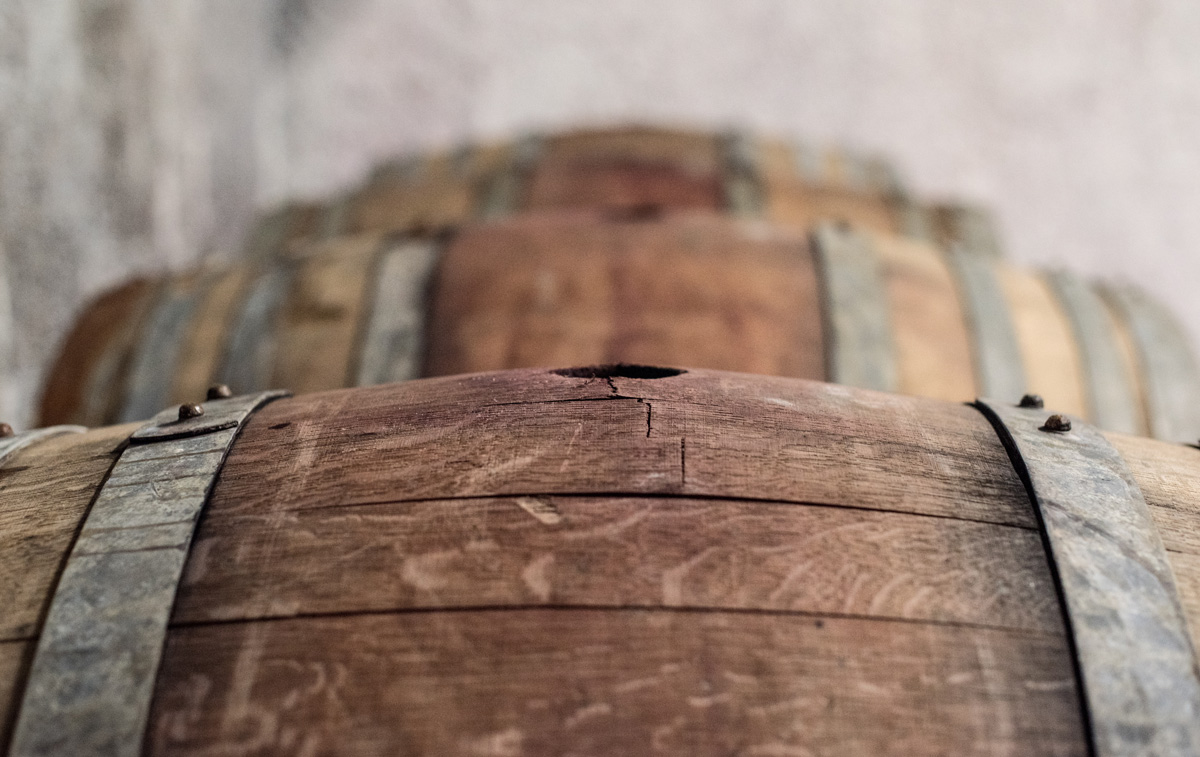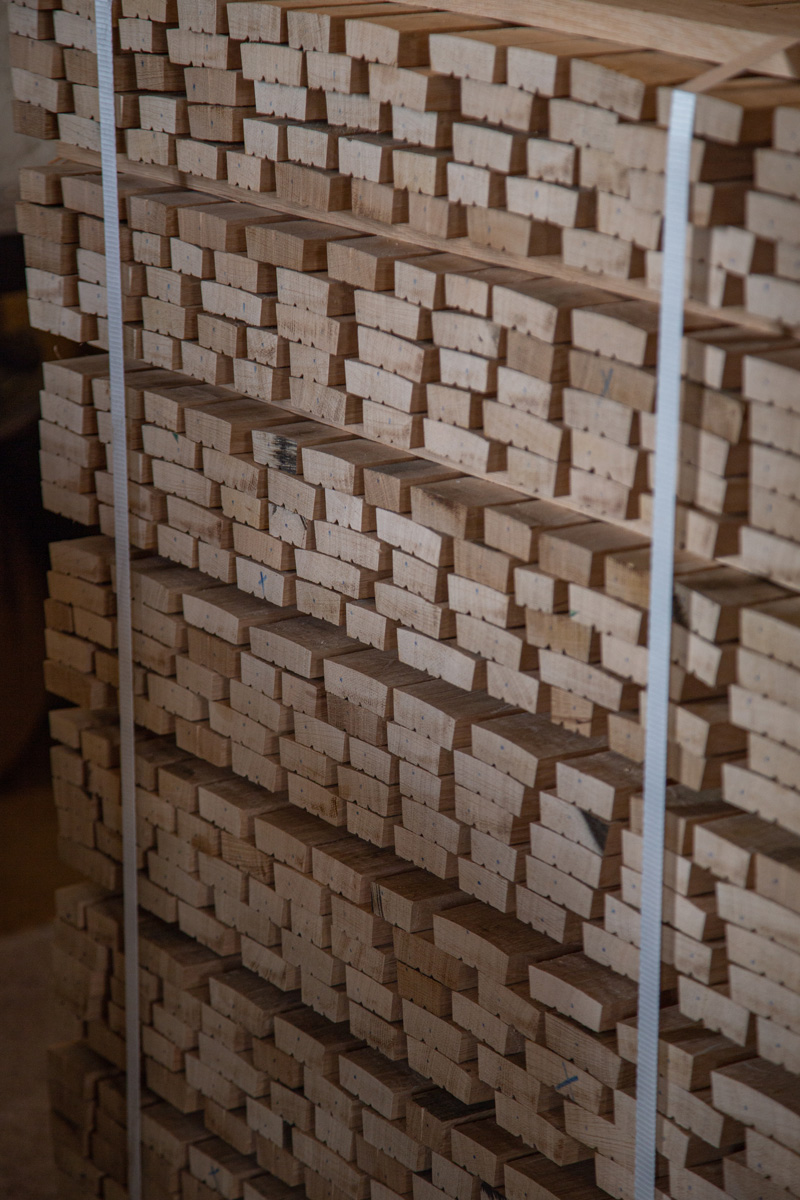
Wine Culture Magazine

French oak barrels like these are the most expensive option. Getty Images photo
We all know that the barrel can add layers of flavour to wine—baking spices, vanilla, coconut, caramel, toast and smoke—but have you wondered about how much the barrel costs? Or how much it adds to the price of your wine?
The barrel has been around for about 2,000 years, and generally French oak is preferred as an aging and/or fermentation vessel. French oak is particularly admired for its tight grain, softer tannins and subtle, complex aroma and flavour profile. There are several famous French oak forests (Vosges, Tronçais, Alliers or Nevers) where slow-growing, tightly spaced, slender oak trees yield wood for casks of tremendous calibre and finesse. Eastern European oak (Hungarian and Slavonian) is similarly admired.
It’s generally accepted that wine barrels are typically the second most expensive non-overhead input in the production cost of a bottle of wine (the first is grapes). What contributes to the cost of a fine barrel?
• French Oak (most expensive) versus European Oak versus American Oak (least expensive).
• Provenance and age of the oak.
• Hand split versus sawn staves.
• Curing methods of the staves (air-dried versus kilned).
• How the staves are bent.
• Toast level and stave thickness.
• Skill and reputation of the cooper.
In addition, recent forest fires, droughts and pandemic-related supply-chain choke points have added new layers of expense and scarcity. It’s also been suggested that preparation for the 2024 Paris Olympics will drive up oak prices, as demand for oak construction intensifies
A standard French oak barrel commands around US$1,000 to US$3,600 for a 228-litre cask. But here’s the bald truth: Only 20 to 25 per cent of a tree can be used when coopering French barrels with split staves, leaving a lot of high-quality surplus wood.
So what about using that leftover oak to flavour wine without the expense of making the barrel?

In addition to barrels, winemakers can use “alternative oak,” including, clockwise from top left: toasted and untoasted French oak dominoes (photo courtesy of Canadell.com; French oak chips; and toasted stave fans (photos courtesy Seguin Moreau Napa Cooperage).
That’s where “alternative oak” romps into the picture. Maximizing surface area—remember that only the inner surface of the barrel can be used—to achieve optimal flavour and tannin softening into wine, these off-cuts can be turned into oak fans, oak dominoes or oak chips, all with varying toasting levels. The cost is a relative deal: A typical fan will offer 2.2 square metres of oak contact for about $110 per fan; French oak dominos and chips are about $210 per 10 kilo bag.
It goes without saying that oak alternatives are not used for premium wines, but they tick the boxes of being resource efficient, affordable and highly effective at flavouring and smoothing the texture of everyday wine. Oak barrels can add $5 or more to a wine’s shelf price, compared to pennies for the growing use of oak alternatives.
Where does American oak fit into this puzzle? We will climb that tree next issue!

A pallet is stacked with oak staves to make wine barrels. Getty Images photo
• It takes 70 to 100-plus years for a single oak tree to be ready for harvesting.
• A typical French oak tree will yield two barrels that will hold just 50 cases of wine.
• An experienced cooper can make/finish four barrels per day; each takes about 12 hours, based on degrees of mechanical help.
• A barrel will imbue a wine with aromas and flavours for up to five years and can be reconditioned to extend its use even further.
• The rate of oxygen transfer (OTR) has been comprehensively studied by UVaMOX (a research group at Valladolid University in Spain), reminding us that tighter grain oak is more permeable to oxygen.
• French oak is more permeable to oxygen, but American oak barrels have a higher total oxygen transfer rate; according to UVaMOX, this is mostly because American staves are typically sawn against the grain, while French ones are split along the grain.
• The latest research suggests that American oak has an oxygen transfer rate of 11.3 mg/litre per year, while French oak transfers oxygen at 8.18 mg/litre per year.
• Interestingly, half of the annual oxygen transfer happens in the first two to four months that a wine is in barrel.

DJ Kearney is a Vancouver-based wine educator, consultant, speaker, judge and global wine expert. Creator of the New District Wine Club, she is also Terminal City Club’s Director of Wine and Vice-President of CAPS-BC, responsible for the Best Sommelier of BC competition.

DJ Kearney is a Vancouver-based wine educator, consultant, speaker, judge and global wine expert. Creator of the New District Wine Club, she is also Terminal City Club’s Director of Wine and Vice-President of CAPS-BC, responsible for the Best Sommelier of BC competition.
@ Vitis Magazine